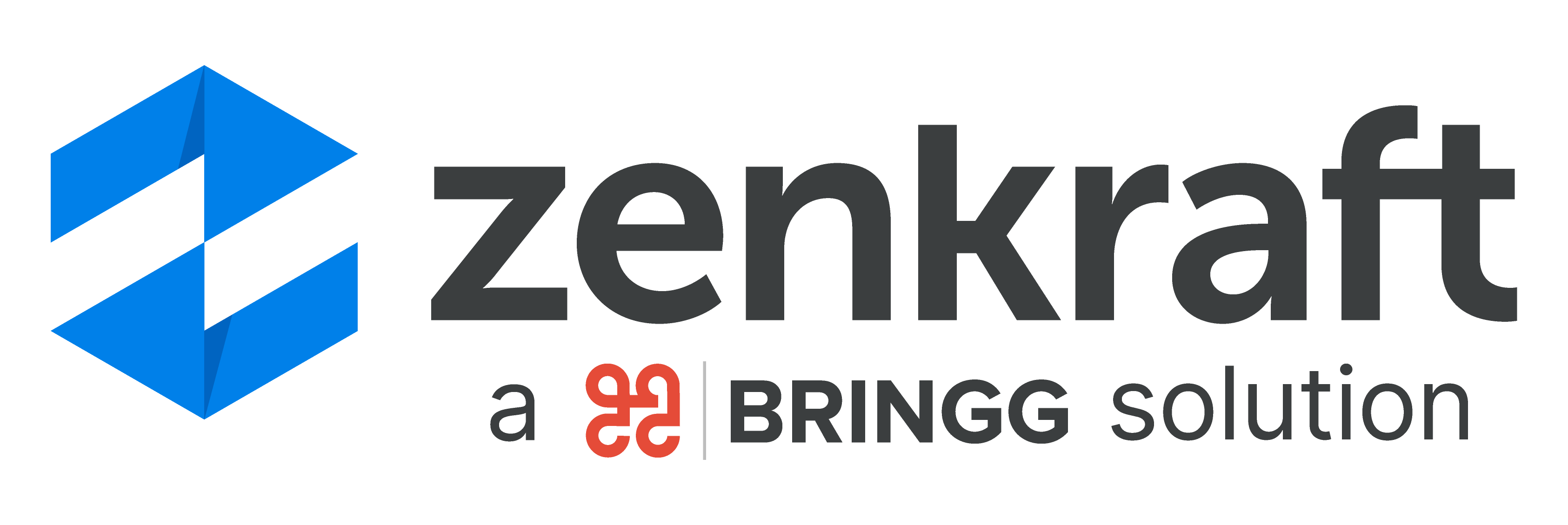Managing customer data for your organization is a tough and often thankless job. The rapidity that data becomes stale, amount of incoming data, inconsistencies with formatting, team members neglecting data entry, and data in disparate systems all play into the difficulty of the job.
Our solution will reduce the number of pains you experience as a customer data manager and create gains for individuals across your organization.
7 Benefits of Shipping from Salesforce:
Time is Money

Zenkraft allows your team to create shipping and return labels faster. Copying and pasting customer data between systems typically takes a customer service rep 5-10 minutes per shipment. With Zenkraft, fully setup shipping labels can be automatically generated. If your team is spending 5 minutes per shipment on label-creation and processing 100 shipments per week. That's 500 minutes a week (a little over 8 hours/week) spent on this task. A task that we have gotten down to a mere 10 seconds per shipping label created for some customers (16 minutes/week for 100 shipments).
Shipping is in Your Blind Spot
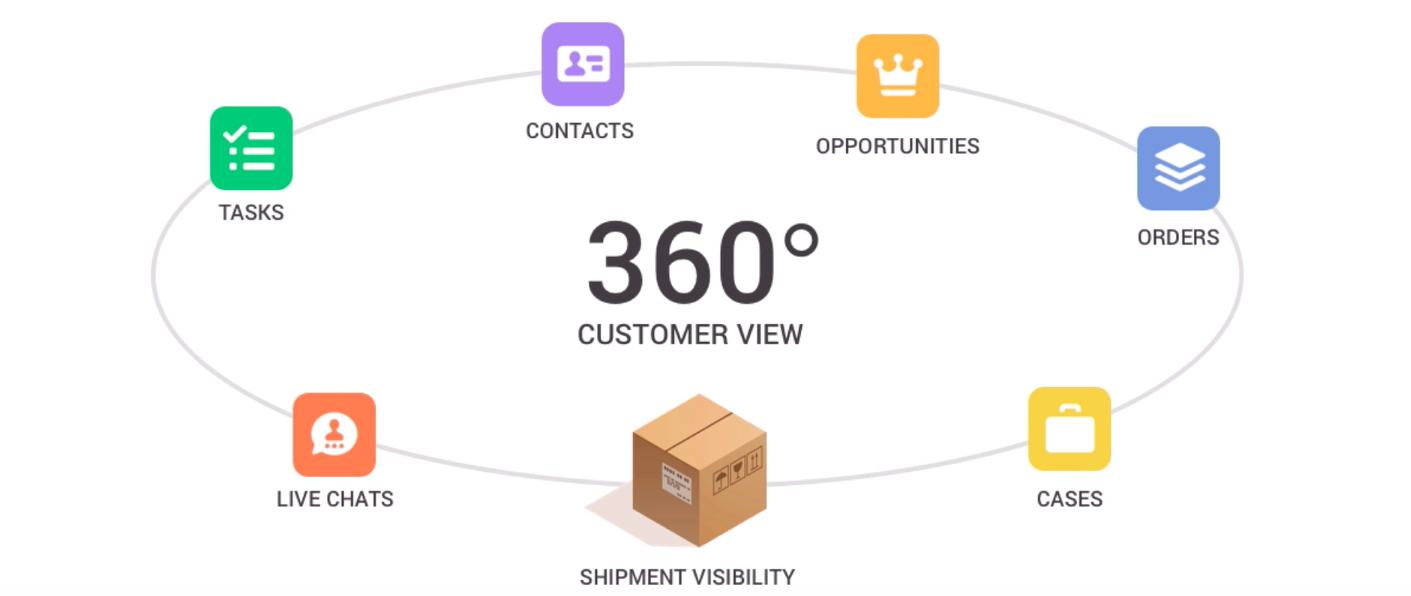
Creating a 360-degree customer view is at the core of the Salesforce Platform. Salesforce has shone a light on the benefits of providing a 360-degree customer view throughout 2019. One of the most important benefits of increasing customer visibility throughout your organization is increasing customer trust. Without shipping data alongside customer data, your employees don't know where customer orders are and you will never be able to fully complete that 360-degree customer view. Having access to this data across your organization allows your team to delight customers (without having to transfer them to a different department).
A Single System for your Customer Data
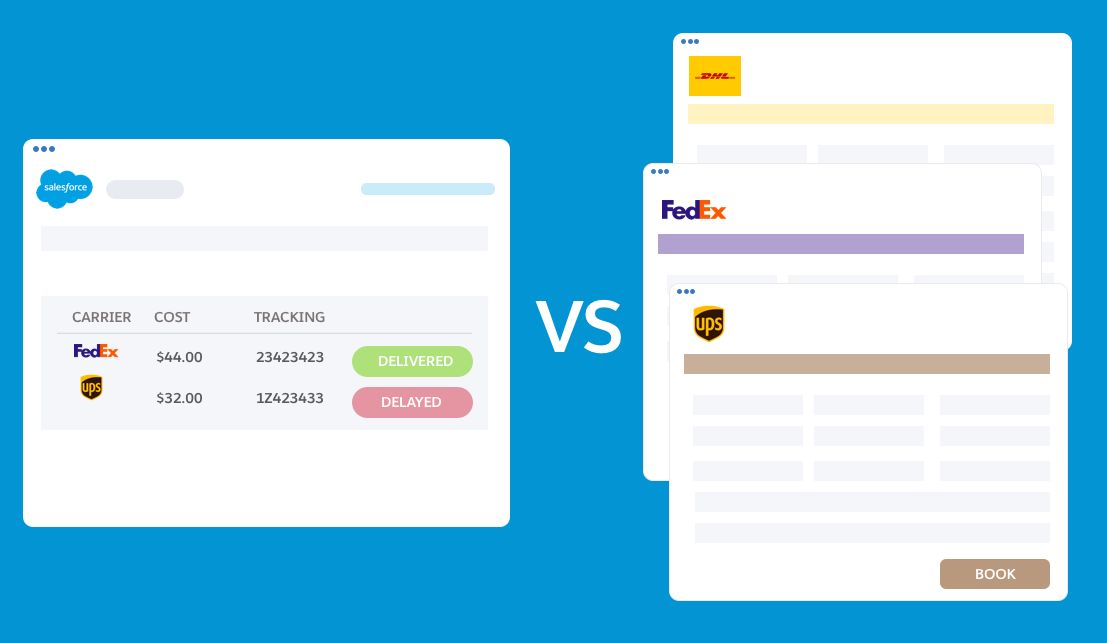
Syncing customer data across multiple databases is a thing of the past. Business data rapidly becomes stale. According to WINMO, 30% of business data becomes stale every 12 months. Data becomes stale when companies change hands (mergers & acquisitions), individuals leave companies for better jobs, or individuals switch roles at their current company. This means that keeping address and contact data up-to-date in a single system is hard enough. Keeping it updated in two or more different systems and synced effectively is manual, time-consuming, and error-prone.
Easily Integrate with Other App Exchange Solutions

Warehouse Management Systems (WMS), Enterprise Resource Planning (ERP), and Accounting are all moving to the cloud! That's why we focus on making sure our app easily integrates with other ISVs on the AppExchange. Zenkraft integrates with clicks, not code, into 5,000+ other AppExchange applications. This means that you can implement and go-to-market faster without acquiring lots of technical debt when implementing our solution.
Additionally, no-code integration allows your team to quickly and cost-effectively build upon the functionality of our application by downloading other AppExchange solutions. For example, if you'd like to send a text message every time a shipment is delivered, you can easily implement an AppExchange SMS text message application.
More Manual Entries = More Mistakes
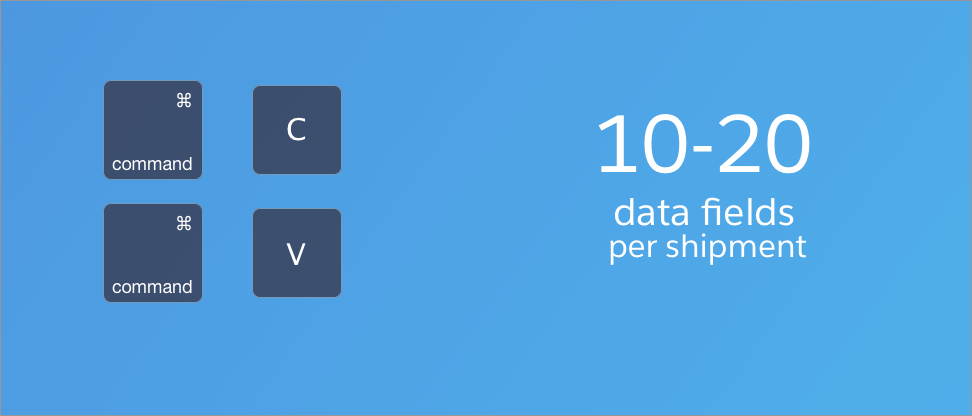
Copy and pasting data between systems is time-consuming and means that mistakes are made (despite your customer service reps’ best efforts). Think about it this way: If you ship 100 items per week and the error rate is 5%, what is the cost of fixing those 5 lost packages? What kind of experience does it create for the customer? A disjointed experience! A customer experience that involves being passed around from department to department and being put on hold with no guarantee they will end their experience with more information or timely arrival of their order.
Inform your Organization

Now that your shipping data is stored natively on the Salesforce platform, you can use Salesforce's powerful reporting and dashboard capabilities to gain insights into shipping data that wasn't previously available inside the platform. For example:
- You can associate shipment costs to a particular customer.
- You can calculate the average cost of a return by a specific group of customers or industry.
- Based on estimated delivery dates from the carrier, you can potentially downgrade shipment service types to cheaper services and they will still arrive on the same day. For example, in some areas of the country, a Ground Shipment will arrive the next day and an Express shipment will also arrive the next day but the Express shipment might cost 3x more.Reduce Cost of Employee Turnover
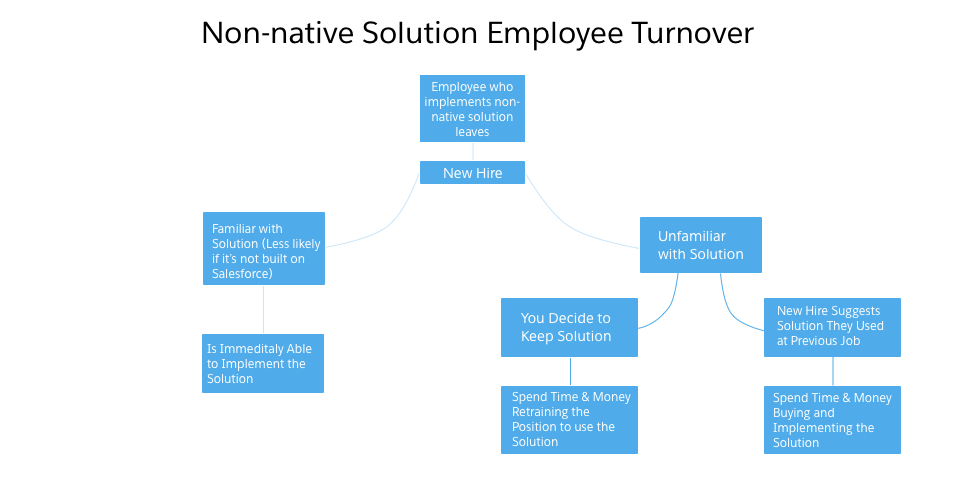
Unfortunately, we often see companies that are forced to retrain, retool, and respend after their customer data manager leaves. If the person that implements Zenkraft leaves the company it isn’t an issue because Zenkraft is built using core Salesforce technology. This means that every Salesforce Admin or above (estimated to be 1,000,000+ people) will already know how to configure and implement our application. This makes the risk of implementing Zenkraft significantly lower than implementing a non-native shipping tool.
Final Word
Customers typically switch to our Salesforce native solution to kill pains instead of creating gains. But that doesn't mean you won't see gains if you decide to implement Zenkraft in your Salesforce org. Our customers have reported a 3-5x return on investment within the first 12 months of switching to our Salesforce native solution.
